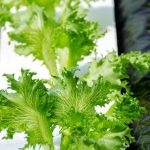Are you interested in starting a vegetable garden in Australia? Whether you are an experienced gardener or just getting started, the unique climate and conditions in Australia present both challenges and opportunities for growing your own produce. In this article, we will explore the world of gardening in Australia, offering tips and techniques for successful vegetable gardening in this diverse and beautiful country.
Australia’s climate varies greatly from region to region, with tropical, subtropical, temperate, and arid climates across the continent. Each of these climates presents its own set of challenges and advantages when it comes to growing vegetables. From the hot and dry conditions of the Outback to the mild winters of the southern coast, understanding how these factors impact gardening is essential for success.
With specific attention to the unique Australian climate, we will explore the best vegetables to grow in Australia and offer tips on how to successfully cultivate them in local soil. Additionally, we will discuss Australian gardening techniques and practices that have proven successful for vegetable gardeners in this region. Stay tuned as we delve into the wonderful world of vegetable gardening in Australia.
Best Vegetables to Grow in Australia
Australia’s diverse climate and unique soil conditions make it an ideal place for vegetable gardening. With the right knowledge and techniques, gardeners in Australia can enjoy a bountiful harvest of fresh, homegrown produce. When planning a vegetable garden in Australia, it is important to select the right vegetables that are well-suited to the local climate and growing conditions.
Top Vegetables for Australian Gardens
Some of the best vegetables to grow in an Australian garden include tomatoes, capsicums, carrots, lettuce, spinach, and broccoli. These vegetables thrive in the warm summers and mild winters of Australia, making them relatively easy to grow with proper care. Additionally, herbs such as basil, parsley, and chives are also excellent choices for Australian gardens due to their adaptability to the climate.
Tips for Successful Vegetable Gardening
To ensure successful growth of these vegetables in an Australian garden, it is important to provide adequate sunlight, proper irrigation, and well-draining soil. Mulching can also help retain moisture in the soil during the hot summer months. Additionally, regular fertilization with organic matter can improve soil fertility and support healthy plant growth.
Australian Gardening Techniques
Australian gardening techniques emphasize water conservation and protection against extreme weather conditions. Many gardeners in Australia practice “no-dig” gardening or use raised beds to improve drainage and prevent waterlogging during heavy rains. Incorporating compost into the soil is also a common technique used by Australian gardeners to enrich the soil and promote healthy plant growth.
By Selecting the Right Vegetables and Implementing These Techniques,
gardeners can create a thriving vegetable garden that produces an abundance of fresh produce throughout the year. With careful planning and cultivation practices tailored to the unique climate of Australia, a successful vegetable garden is well within reach for any aspiring gardener.
Australian Gardening Techniques
Gardening in Australia: Tips and Tricks
When it comes to vegetable gardening in Australia, there are certain techniques and practices that can greatly improve your chances of success. With the unique climate and conditions in Australia, it’s important to adapt traditional gardening methods to suit the specific needs of this region.
One key technique is to make use of the abundant sunlight in Australia by ensuring that your vegetable garden receives adequate sun exposure. This may require strategic placement of your garden beds and regular pruning of surrounding trees or shrubs.
Watering and Irrigation
Another crucial aspect of Australian gardening techniques is proper watering and irrigation. Given the variable climate conditions across different regions of Australia, it’s important to develop an understanding of your local climate and adjust your watering practices accordingly. In drier regions, efficient irrigation systems such as drip irrigation or soaker hoses can help conserve water while ensuring that your vegetable garden remains adequately hydrated.
Soil Preparation and Maintenance
In order to achieve a successful vegetable garden in Australia, it’s essential to pay attention to soil preparation and maintenance. Australian soils can vary widely in their composition, from sandy soils in coastal areas to clay soils inland.
Conducting a soil test and amending the soil with organic matter such as compost or well-rotted manure can improve its structure and fertility, providing an optimal growing environment for vegetables. Additionally, regularly testing the pH levels of the soil and adjusting them as needed will contribute to healthy plant growth in your gardening Australia vegetable garden.
Climate Considerations
Australia is a vast country with diverse climates, ranging from tropical in the north to temperate in the south. This variability means that different vegetable crops will thrive in different areas, and it’s important to consider the specific climate of your region when planning your garden. Here are some climate considerations to keep in mind for successful vegetable gardening in Australia:
- Choose vegetables that are well-suited to your climate. For example, heat-loving crops like tomatoes, capsicum, and eggplant are ideal for warmer regions, while cooler areas may be better suited for crops like broccoli, spinach, and carrots.
- Plan your planting schedule according to the seasons in your region. In northern Australia, where the climate is more tropical, there may be distinct wet and dry seasons that will impact when you can plant certain vegetables.
- Consider water availability and irrigation needs. Australia is known for its hot and dry conditions, so it’s important to choose vegetables that are drought-tolerant and implement efficient watering practices to conserve water.
It’s also important to pay attention to local microclimates within your own garden. Factors such as shade from buildings or trees, wind exposure, and soil type can all impact the growing conditions for your vegetables. By taking these climate considerations into account, you can create an optimal growing environment for a successful vegetable garden in Australia.
Effective planning is essential for any successful gardening project. The gardening australia vegetable garden experience would benefit tremendously from proper planning based on climate considerations which play a significant role leading towards fruitful success of any potential gardener’s endeavor.
Pest Control and Disease Management
When it comes to maintaining a successful gardening australia vegetable garden, managing pests and diseases is essential for the health and productivity of your plants. In Australia, the warm climate and diverse ecosystems can lead to a variety of pests and diseases that can impact your vegetable garden. Here are some effective strategies for controlling and preventing these issues:
1. Integrated Pest Management (IPM): One of the most sustainable approaches to pest control is through IPM, which involves a combination of biological, cultural, physical, and chemical tactics. This method focuses on preventing pests through practices such as crop rotation, using beneficial insects, and maintaining healthy soil.
2. Natural Remedies: Many gardeners in Australia opt for natural remedies to control pests and diseases in their vegetable gardens. For instance, using neem oil or garlic spray can help deter common pests like aphids or caterpillars without harming beneficial insects or pollinators.
3. Disease-resistant Varieties: When planning your vegetable garden, consider selecting varieties that are known to be resistant to common diseases in your area. This can significantly reduce the risk of disease affecting your plants.
4. Regular Monitoring: Keeping a close eye on your plants is crucial for early detection of any pest or disease issues. By regularly inspecting your garden, you can intervene before an issue becomes widespread.
By implementing these pest control and disease management strategies, you can help ensure the success of your vegetable garden in Australia. Taking a proactive approach to these challenges will ultimately result in healthier plants and higher yields from your garden.
Seasonal Planting Guide
Vegetable gardening in Australia is a popular and rewarding activity, with the country’s unique climate providing both opportunities and challenges for gardeners. When it comes to planning your vegetable garden, understanding the seasonal planting guide is essential for success. In Australia, the climate can vary greatly from region to region, so knowing when to plant specific vegetables based on your location is crucial.
For those living in the tropical northern regions of Australia, the best time to plant vegetables like tomatoes, cucumbers, and sweet corn is during the dry season, which typically falls between April and August. On the other hand, gardeners in the cooler southern regions should plan their planting of these same vegetables for spring and early summer.
One important factor to consider when following the seasonal planting guide for vegetable gardening in Australia is the potential impact of extreme weather events such as droughts or heatwaves. These conditions can significantly affect plant growth and development. Adhering to local water restrictions and implementing water-saving techniques are essential strategies for mitigating these challenges.
| Region | Recommended Planting Time |
|---|---|
| Tropical Northern Regions | April – August (Dry Season) |
| Cooler Southern Regions | Spring – Early Summer |
In addition to considering when to plant specific vegetables, it’s also important to be mindful of crop rotation and succession planting. These practices help maintain soil health and maximize yield by preventing nutrient depletion and reducing the risk of pests and diseases. By following a thoughtful seasonal planting guide tailored to your specific region in Australia, you can ensure a bountiful harvest from your vegetable garden.
Sustainable Gardening Practices
Gardening in Australia presents a unique set of challenges and opportunities, and sustainable gardening practices are essential for successful vegetable gardening. With the diverse climate and environmental conditions across the country, it is crucial for gardeners to implement sustainable techniques to promote healthy growth while minimizing negative impacts on the environment. Sustainable gardening in Australia involves working with nature, conserving resources, and reducing waste to create a thriving vegetable garden.
One key aspect of sustainable gardening in Australia is water conservation. With many regions experiencing dry and arid conditions, it is important for vegetable gardeners to utilize water-saving techniques such as mulching, drip irrigation, and planting drought-resistant vegetables. By reducing water usage in the garden, gardeners can minimize their environmental impact while still maintaining healthy vegetable crops.
Furthermore, promoting biodiversity and natural pest control methods is another essential element of sustainable gardening in Australia. Encouraging beneficial insects like ladybugs and lacewings can help control pests without the need for harmful chemical pesticides. Additionally, practicing crop rotation and companion planting can help prevent disease and maintain soil health without relying on synthetic fertilizers or pesticides.
In addition to these practices, composting organic materials plays a significant role in sustainable gardening in Australia. By reusing kitchen scraps, yard waste, and other organic matter as compost, gardeners can enrich their soil naturally without resorting to chemical fertilizers. This not only reduces waste but also improves the overall health of the garden ecosystem. Overall, embracing sustainable gardening practices not only benefits the individual vegetable garden but also contributes to a healthier environment for all of Australia.
Success Stories From Australian Gardeners
In conclusion, vegetable gardening in Australia offers a unique and rewarding experience for both seasoned gardeners and beginners. The varying climates and conditions across the country present both challenges and opportunities for cultivating a successful vegetable garden. By implementing the right techniques, choosing the best vegetables to grow, and being mindful of sustainable practices, Australian gardeners can enjoy a bountiful harvest while contributing to the environment.
One of the key takeaways from successful Australian gardeners is the importance of adapting to the specific climate and soil conditions in different regions. From the tropical north to the temperate south, each area has its own set of challenges that require tailored approaches to vegetable gardening. By learning from experienced gardeners and experimenting with various techniques, individuals can find success in nurturing their own thriving vegetable patches.
Overall, the journey of vegetable gardening in Australia is not just about growing food-it’s also about fostering a deeper connection to nature and exploring sustainable practices that benefit both individuals and the environment as a whole. As more Australians discover the joy of tending to their own vegetable gardens, the community of gardeners continues to grow, providing support, inspiration, and valuable insights for newcomers embarking on their own gardening Australia vegetable garden journeys.
Frequently Asked Questions
Can You Grow a Vegetable Garden in Australia?
Yes, it is possible to grow a vegetable garden in Australia. With the right knowledge of the climate and soil conditions in different regions, it is entirely feasible to cultivate a variety of vegetables.
What Is the Best Layout for a Vegetable Garden in Australia?
The best layout for a vegetable garden in Australia depends on the specific location and climate. Generally, raised beds or containers are recommended to improve drainage and reduce the risk of waterlogging, which can be an issue in some parts of the country.
What Is the Easiest Vegetable to Grow in Australia?
One of the easiest vegetables to grow in Australia is the cherry tomato. It thrives in warm climates and can even withstand periods of drought, making it a low-maintenance option for gardeners. Additionally, herbs like basil and mint tend to flourish with minimal effort.

If you’re looking to get into vegetable gardening, or are just looking for some tips on how to make your current garden better, then you’ve come to the right place! My name is Ethel and I have been gardening for years. In this blog, I’m going to share with you some of my best tips on how to create a successful vegetable garden.





